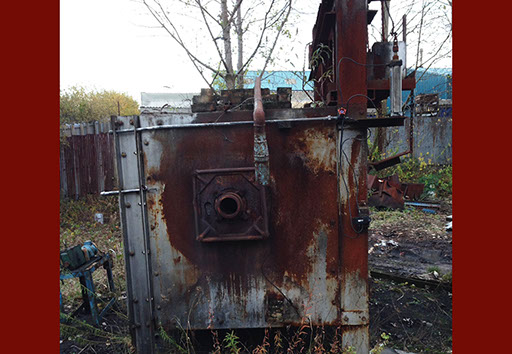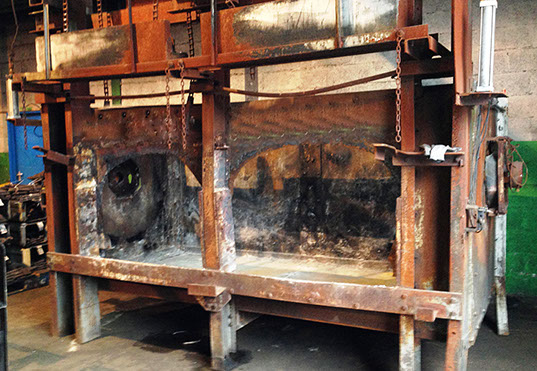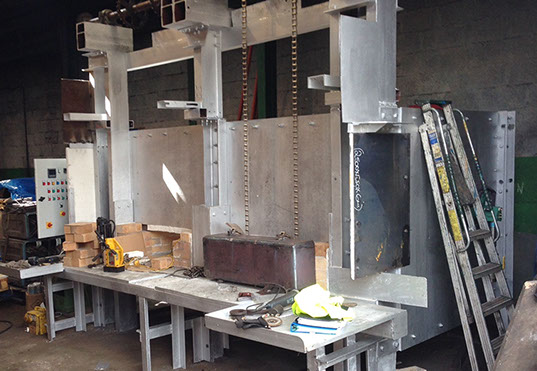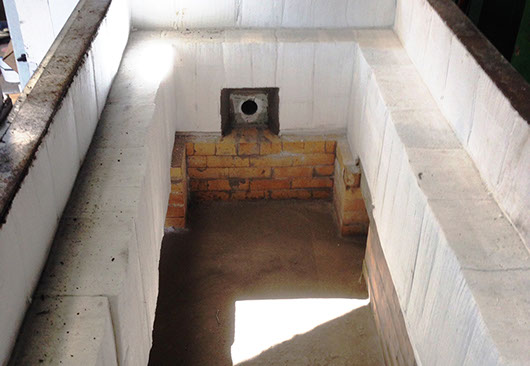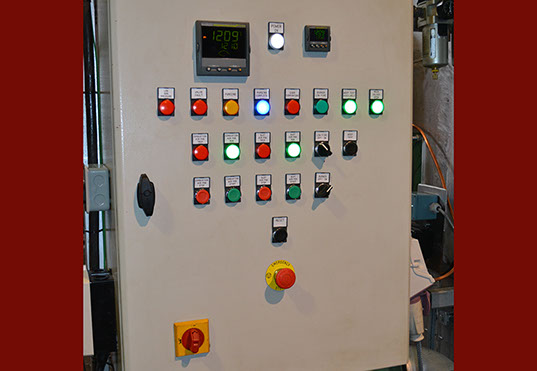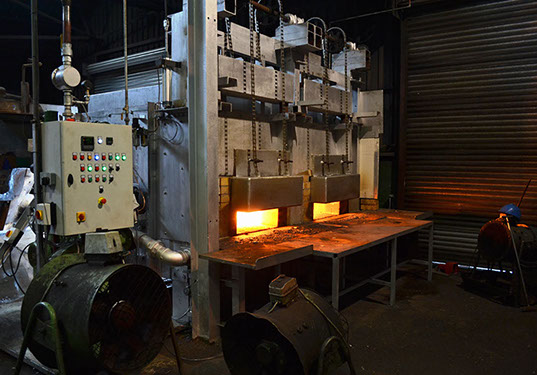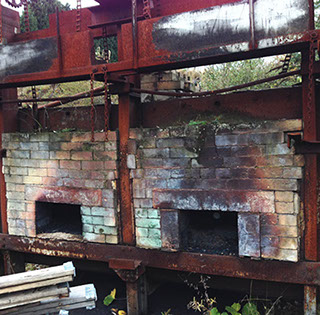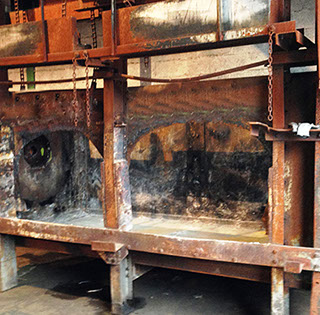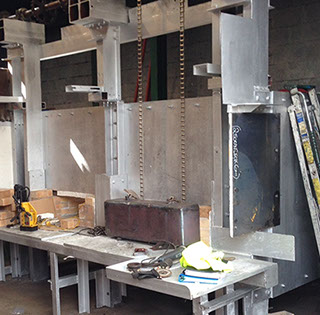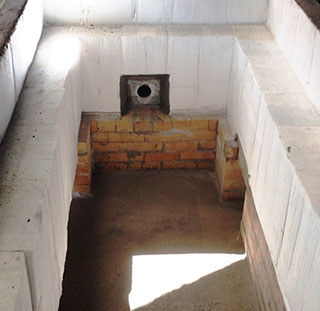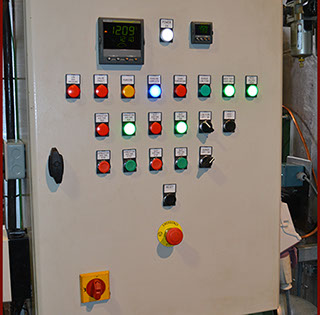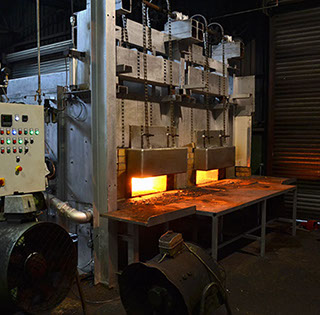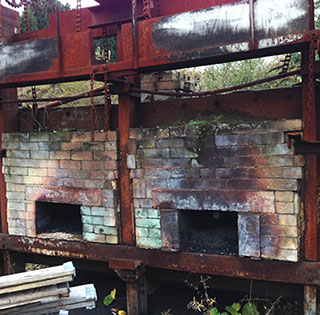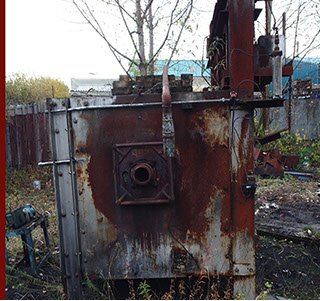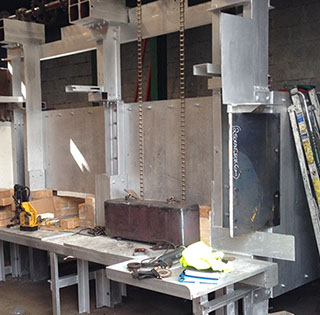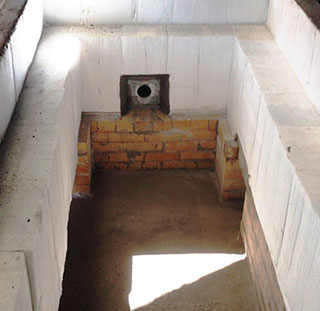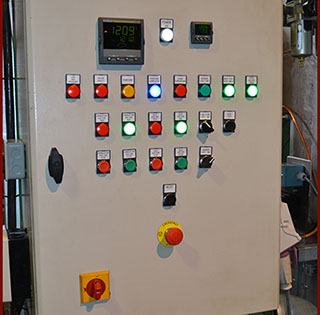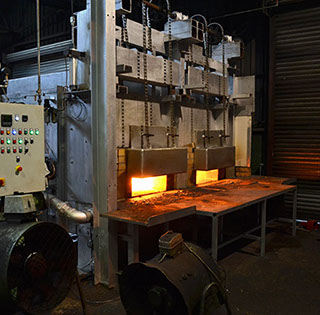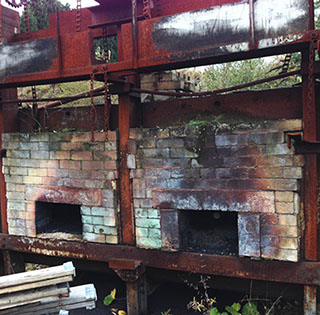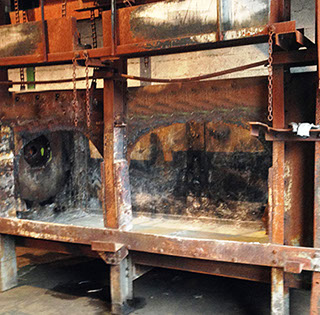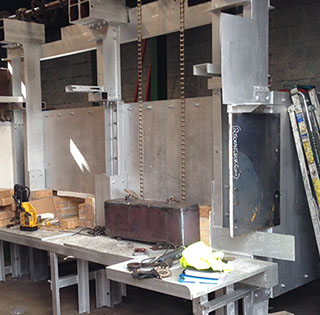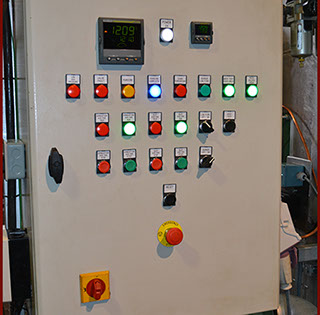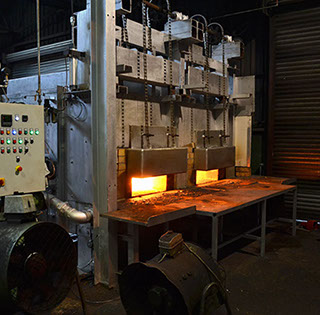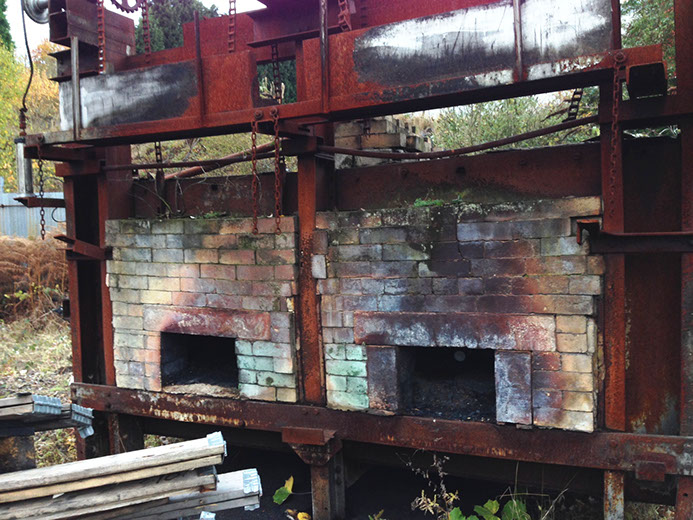
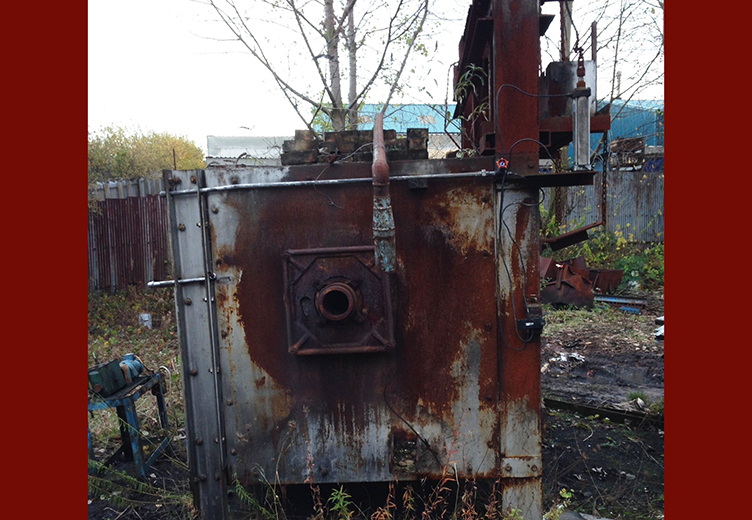
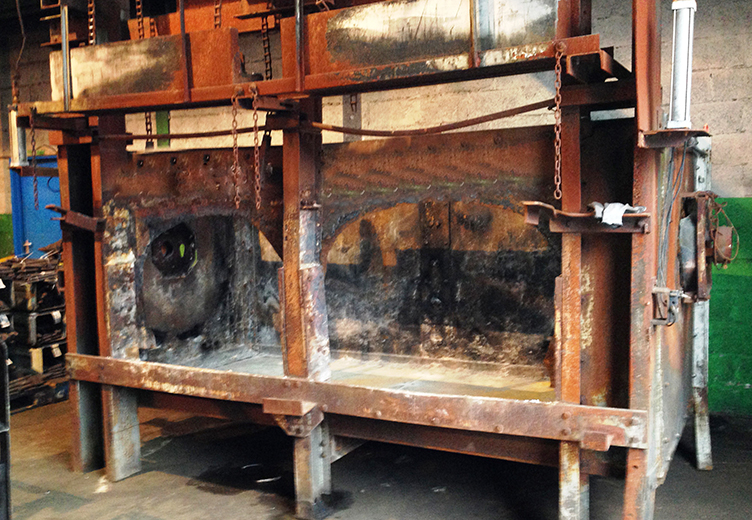
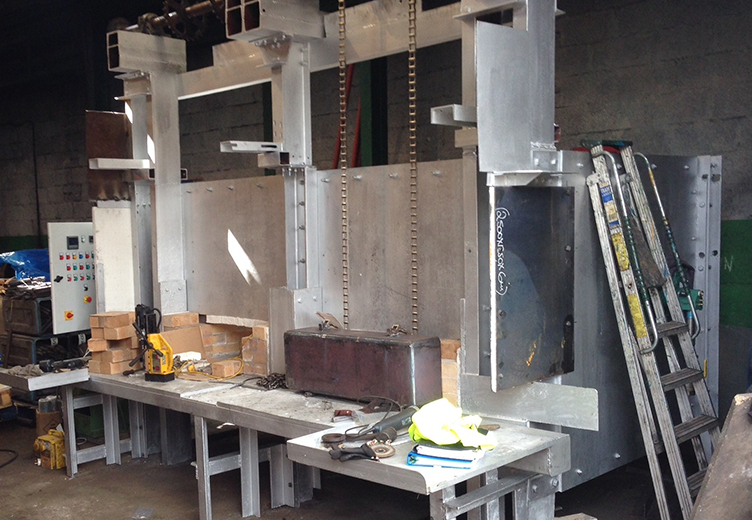
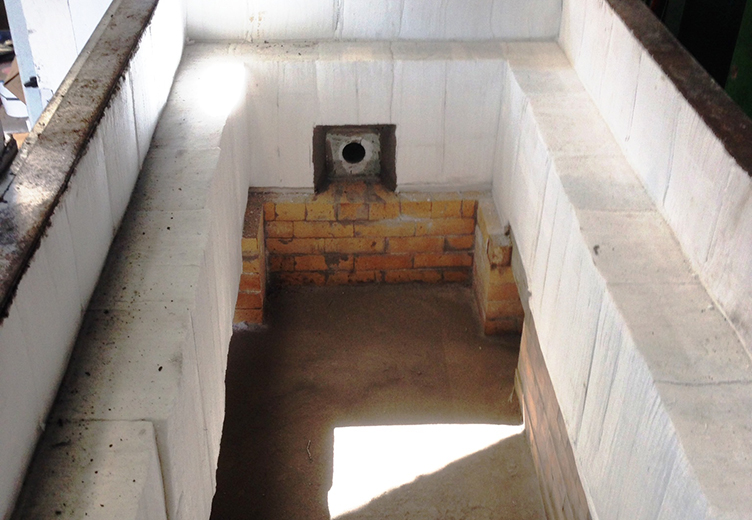
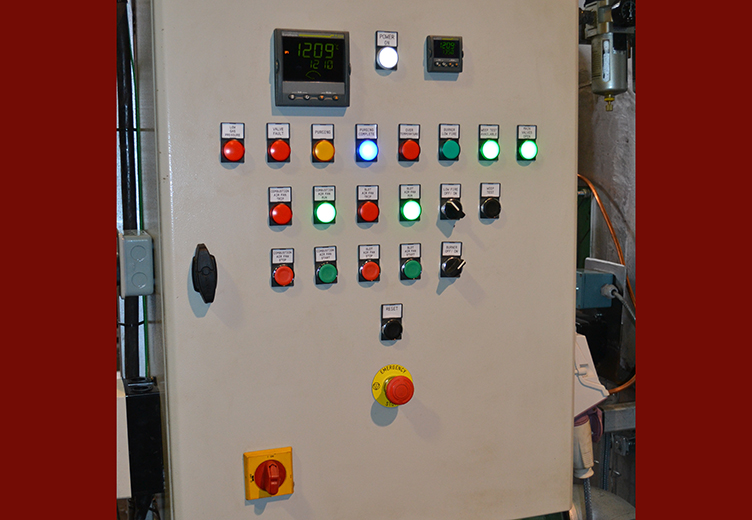
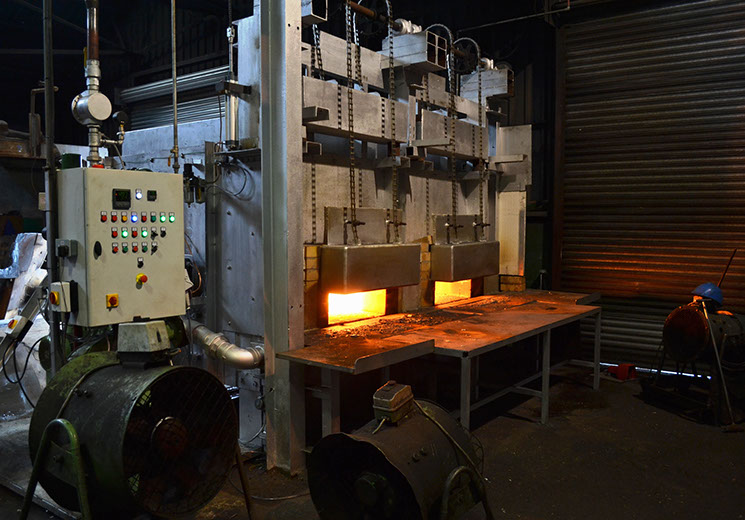







1 | Start point, redundant Furnace out of production for 20 years
2 | Start point redundant Furnace
3 | Furnace stripped awaiting RSJ laser alignment survey
4 | Furnace under reconstruction
5 | Following re-lining with 250mm Ceramic Fibre
6 | Furnace re-commissioning with new Control Panel
7 | Commissioned Furnace in production once again
In September 2014 we were tasked with investigating the possibility of the total reconstruction of a redundant Oil Fired Forge Furnace which had stood outside in all weathers, subject to the elements, for many years. As you will note from the photographs, this was clearly “a bit of an ask” however, not being a Company to overlook a challenge, with some degree of trepidation, we set to work thinking about how we could reconstruct this furnace, vastly improving its efficiency and again bring it back to life.
We began by completely demolishing the old refractory lining and with grateful assistance and the aid of our client, work began stripping out all of the door gear, removing the majority of the RSJ’s and laser re-aligning the beams to achieve a return to a “true” structure.
New gas fired burners were sourced and mounted to the furnace complete with new gas control train, combustion air and door curtain fans, finished out with a new state of the art control panel.
Particular attention was then given to the re-lining of the furnace. Historically, this type of furnace would have been traditionally lined with hard face fire bricks due to the mechanical attrition which the furnace would be subjected to during campaign from the loading of steel billets. We took a view here that there would need to be a compromise between the requirement to overcome the risk of mechanical damage and the inherent benefit of utilising high density ceramic fibre wherever possible due to the high mass density and thermal insulation properties.
Accordingly, we decided to cast the hearth in high density, LC abrasion resistant refractory castable, moving away here from the traditional fire brick hearth. The lower levels of the side walls and back wall were then constructed with a traditional hard faced fire brick which supported the ceramic fibre lining and to limit mechanical damage to the fibre lining from contact, when charging with billets. This was topped out with a lift off fibre lined roof equal to the side wall linings with a 320 mm thickness of 170 Kg/m³ ceramic lining.
Moving onto the revised control philosophy of the furnace, here we moved away from the again traditional High/Low burner control and using Eurotherm Process Control instruments, we decided to go for a full fully proportional PID loop control
of the burners which enabled us to provide for a very accurate and even temperature control of the billet stock within the furnace. This maximised the efficiency of the energy input to the furnace along with the energy efficient characteristics achieved from the increased application of ceramic fibre within the areas not subjected to mechanical damage.
The results of our endeavours have achieved an energy efficient forging furnace which will now rapidly achieve ambient to circa, 1280ºC forging temperature within a very short period of time when compared to the old traditional and somewhat inefficient complete fire brick lining. This has enabled heat up time and the work flow through the furnace to be increased and the recovery time of the charged billets to be reduced very significantly achieving an overall improvement throughout the forging process.

Telephone +44 (0) 1384 564160
FAX +44 (0) 1384 635628 72 Bannister Street, Cradley Heath, Warley, B64 5EQ
© Industrial Combustion Engineers Ltd. 2023.
Website design by Steve Jolliffe

































